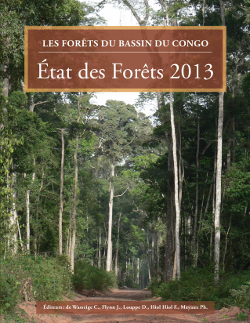
Etat des Forêts 2013
Etat des Forêts 2013
Cette nouvelle édition de l’Etat des Forêts n’aurait pas pu voir le jour sans les contributions de nombreux auteurs et lecteurs qui y ont consacré beaucoup de temps et d’énergie. Les contributions financières de l’Union européenne, la Norvège, les États-Unis d’Amérique, l’Allemagne, la France, le Canada et la FAO doivent également être soulignées.
Le rapport représente le fruit de la collaboration de plus de 150 personnes provenant de différentes institutions et les administrations forestières des pays d’Afrique centrale. Une partie des données présentées dans l’Etat des Forêts 2013 est collectée par les groupes nationaux (quatre à dix personnes travaillant au sein des administrations forestières). Les données sont généralement validées au cours des ateliers nationaux auxquels participent des fonctionnaires du gouvernement ainsi que des représentants d’ONG environnementales, du secteur privé et les projets de développement. Les données ont fourni une base importante pour les auteurs des 10 chapitres de l’édition 2013. Les chapitres ont été revus et commentés par un large panel d’experts (notamment lors de l’atelier qui a eu lieu 21-22 Mars 2013, à Douala).
Citation souhaitée: Les forêts du bassin du Congo – État des Forêts 2013. Éds: de Wasseige C., Flynn J., Louppe D., Hiol Hiol F., Mayaux Ph. – 2014. Weyrich. Belgique. 328 p. Dépôt légal : D/2014/8631/30 ISBN : 978-2-87489-298-1

Partie I: Les forêts d’Afrique centrale : Synthèse régionale sur les indicateurs de suivi
Partie II: Changement climatique en Afrique centrale
Partie III: Les espaces forestiers autres que les forêts denses humides
Partie IV: Utilisation du sol en Afrique centrale